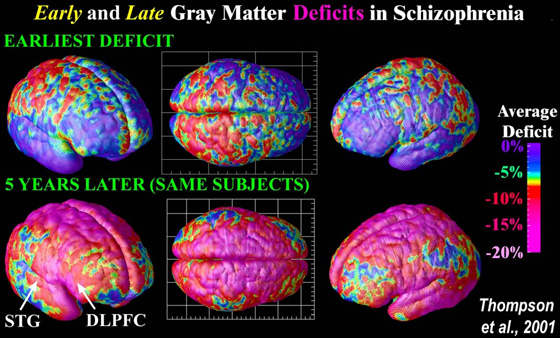Damage to areas of the brain can impair functioning, which is often linked to changes in psychological behaviour. The type of impairment is related to the area of the damage, with certain areas of the brain responsible for certain things. For instance, the cerebral cortex is responsible for advanced thinking and damage to this area can result in an individual being unable to process emotions and difficulty with decision making when it comes to personal and social situations. This can then change the person into someone who is irrational, impulsive, emotional, and inappropriate, much like Phineas P. Gage who suffered a brain injury in a construction accident to his cerebral cortex.
Other areas of the brain implicated in abnormal functioning are the hypothalamus and the limbic system, which includes the fornix, cingulate cortex, cerebral cortex, septum, hypothalamus, amygdala, hippocampus, and spinal cord. These areas are related to the regulation of the basic needs of the body, including eating, drinking, sex, and stress control. Pleasure, pain, and other emotions are also related to the hypothalamus. Therefore, any damage to that area may result in abnormal behaviour related to food or emotional problems.
While damage to the brain can result in disorders related to its functioning, individuals with various disorders, specifically mood disorders, have been seen to have enlarged or smaller areas of the limbic system. Furthermore, those with schizophrenia are hypothesized to have a dysregulation in cerebral cortex functioning and decreased gray matter1.

Functional brain abnormalities are also related to mental illnesses, such as areas of the brain that don't respond as much as they should, or cerebral blood flow dysregulation within the brain. Therefore, it is not just brain injury that can result in abnormal behaviour, but the composition of the brain as well.
References:
1. Thompson, P. M., Vidal, C., Giedd, J. N., Gochman, P., Blumenthal, J., Nicolson, R., et al. (2001). Mapping adolescent brain change reveals dynamic wave of accelerated gray matter loss in very early-onset schizophrenia. Proceedings of the National Academy of Sciences, 98(20), 11650-11655.
© BrainMass Inc. brainmass.com July 22, 2024, 6:07 am ad1c9bdddf